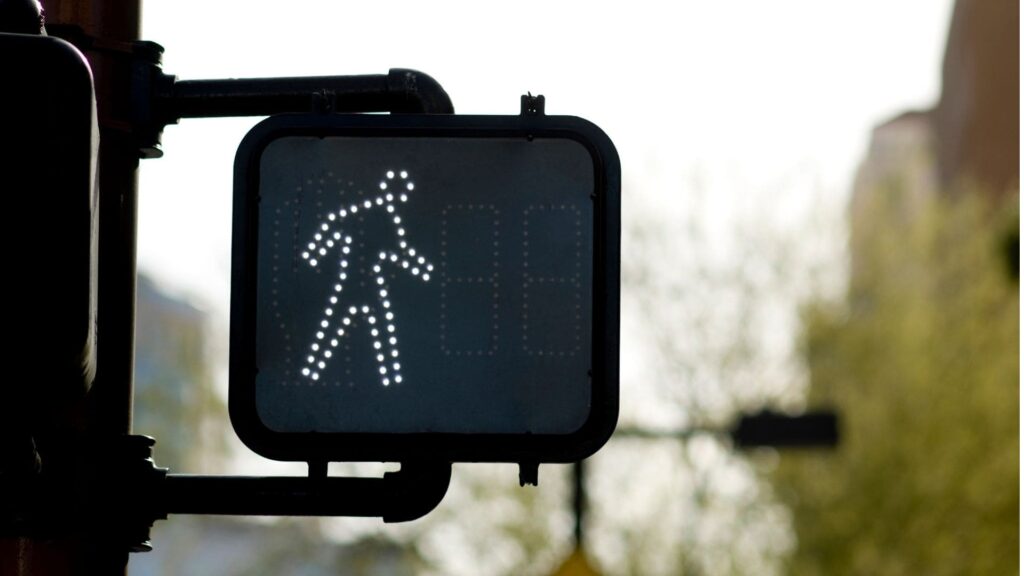 The Most Dangerous Intersections in New York
The Most Dangerous Intersections in New York
When a pedestrian is injured by a vehicle, one of the most critical questions becomes, Who had the right of way? New York’s pedestrian right-of-way laws are designed to protect walkers, joggers, and others on foot, but many people misunderstand them. That confusion can have serious consequences in both personal safety and legal claims.
If you were hit by a car while crossing the street, understanding how the law protects pedestrians and where it draws the line can help clarify your next steps. At Greenspan & Greenspan Injury Lawyers, we help injured pedestrians assert their rights and pursue the compensation they deserve.
What Are Pedestrian Right-of-Way Laws in New York?
New York State law gives pedestrians the right of way in many, but not all, traffic situations.
Pedestrians in Crosswalks
Under pedestrian crosswalk rules, vehicles must yield the right of way to pedestrians who are within a marked crosswalk and on the half of the roadway where the vehicle is traveling (or approaching closely). In other words:
If you are walking in a marked crosswalk, and a car is approaching in your lane or turning into it, the driver must yield. If you are already crossing and the driver sees you or should have seen you, they are legally obligated to stop.
Pedestrians Outside Crosswalks
New York pedestrian crosswalk law also clarifies what happens when someone crosses mid-block or outside of a marked crosswalk. In these situations, vehicles typically have the right of way, and pedestrians must yield.
However, drivers still owe a general duty of care. Even if a pedestrian is not in a crosswalk, drivers must avoid hitting them if reasonably possible. Reckless or distracted driving may still result in liability.
Do Pedestrians Have the Right of Way in New York?
This question is a common one we receive all the time.
The answer is, unfortunately, no. Pedestrians do not always have the right of way. The law protects pedestrians primarily in crosswalks and when following traffic signals. Outside of these conditions, pedestrians must yield to vehicles and exercise caution. That said, vehicles cannot simply strike someone and claim no responsibility. Context, visibility, speed, and behavior all factor into liability.
Pedestrian Crosswalk Rules Every New Yorker Should Know
The pedestrian crosswalk rules in New York can vary depending on signage, signals, and intersection design. Here are the most important ones to remember:
- Obey traffic signals. Pedestrians must obey the “Walk and Don’t Walk signals.” Crossing against the signal, even in a crosswalk, can result in partial liability in an accident;
- Uncontrolled intersections. At intersections without traffic signals or signage, drivers must yield to pedestrians in crosswalks;
- Turning vehicles. Vehicles turning left or right must yield to pedestrians already in a crosswalk; and
- Shared responsibility. Pedestrians must not suddenly leave the curb or walk into traffic if an oncoming car is too close to stop safely.
Failing to follow these rules can impact not only safety but also any legal claims after a collision.
The Role of Traffic Signals and Signs
Traffic control devices play a critical role in determining who has the right of way. For example:
- A pedestrian facing a steady WALK signal has the legal right to cross and should be protected;
- A pedestrian facing a flashing DON’T WALK must not begin crossing, although someone already in the street should be allowed to finish; and
- Yield signs and stop signs place the burden on drivers to assess and respond to pedestrians in crosswalks.
If a driver ignores a signal or fails to yield appropriately, that violation may be used to establish fault in an injury case.
Common Scenarios and How the Law Applies
Understanding pedestrian right-of-way laws in context helps illustrate when a driver or a pedestrian may be at fault.
Scenario 1: Crossing in a Marked Crosswalk with the Signal
The pedestrian has the right of way. If a vehicle strikes them, the driver is likely liable unless there is strong evidence of pedestrian misconduct.
Scenario 2: Crossing Mid-Block Without a Crosswalk
The pedestrian must yield. If they walk into the street and are struck, they may share or bear primary responsibility. However, drivers who were speeding, texting, or intoxicated may still face partial or full liability.
Scenario 3: A Car Turning Right on Red While a Pedestrian Is Crossing
The pedestrian has the right of way. Drivers must wait until the crosswalk is clear before making a legal turn on red.
How Fault Is Determined in a Pedestrian Accident
Establishing fault requires a detailed investigation of:
- Witness statements,
- Video footage or dashcams,
- Police reports,
- Scene diagrams,
- Traffic light data, and
- Medical documentation.
Even if the pedestrian is partially at fault, New York’s comparative negligence rule allows injured individuals to recover damages proportionate to the other party’s share of blame.
Why These Laws Matter for Pedestrian Safety
Right-of-way laws are not just legal technicalities. They play a vital role in preventing serious injury and death. Every year, hundreds of pedestrians are killed or severely injured in traffic crashes.
Understanding who must yield and when gives pedestrians better situational awareness and can save lives. For drivers, knowledge of these laws can prevent legal trouble and protect vulnerable road users.
What to Do After a Pedestrian Accident
If you are hit by a vehicle while walking, protect yourself by taking the following steps:
- Call 911 and request emergency assistance;
- Get medical care, even if injuries seem minor;
- Gather evidence, such as photos, driver info, and witness contact details;
- Avoid making statements to insurers before speaking with a lawyer; and
- Contact an attorney who understands New York pedestrian law.
These actions can protect your health and your legal rights.
Talk to Greenspan & Greenspan Injury Lawyers Today
If you were struck by a car while crossing the street or walking in New York, do not assume the insurance company will treat you fairly. You may be facing medical bills, lost income, and long-term physical pain. Who had the right of way can make or break your claim.
At Greenspan & Greenspan, we help injured pedestrians understand their rights, document what happened, and pursue full compensation. Our firm has been helping injury victims in New York since 1959, and we are ready to assist you.
Call us today or contact us online for a free consultation.







